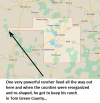Chip
Well-Known Member
- Joined
- Sep 11, 2017
- Messages
- 2,192
- Reactions
- 2,713
The problem I’m specifically concerned with is the exercise of control in the airspace above ground. Whether the property is owned by a private individual or a city/county entity should not matter. In Stanton’s example, it seems that he was piloting while actually on the property. That’s a whole different kettle of fish - which I think the property owner has an inherent right to control.
It sounds to me like the federal judge kicked the aerial trespass and invasion of privacy cans straight down the road. In this passage, he states specifically that existing state laws may be used against drone pilots:
Here, Defendants cannot carry their burden to establish that Chapter 423 is “actually necessary” to protect any identified interests. In enacting the law, state legislators claimed the law would protect private property, individual privacy, and the safety of critical infrastructure facilities. However, Defendants have failed to establish that alternative means are insufficient to sufficiently protect these interests. Plaintiffs note that Defendants have a variety of tools to protect the privacy and private property of Texans from overly intrusive or dangerous drone use without Chapter 423. The Texas criminal trespass statute, Texas Penal Code § 30.05(a); Texas Transportation or Administrative Code; recording and voyeurism statutes, TEX. PENAL CODE ANN §§ 21.15–.17 (West 2020); and tort claims including intrusion upon seclusion, all have been or could be used to protect the privacy of individuals from UAV recordings.














